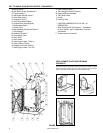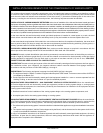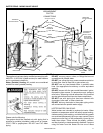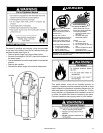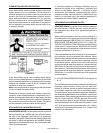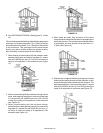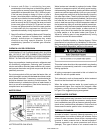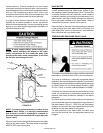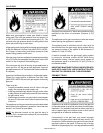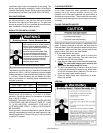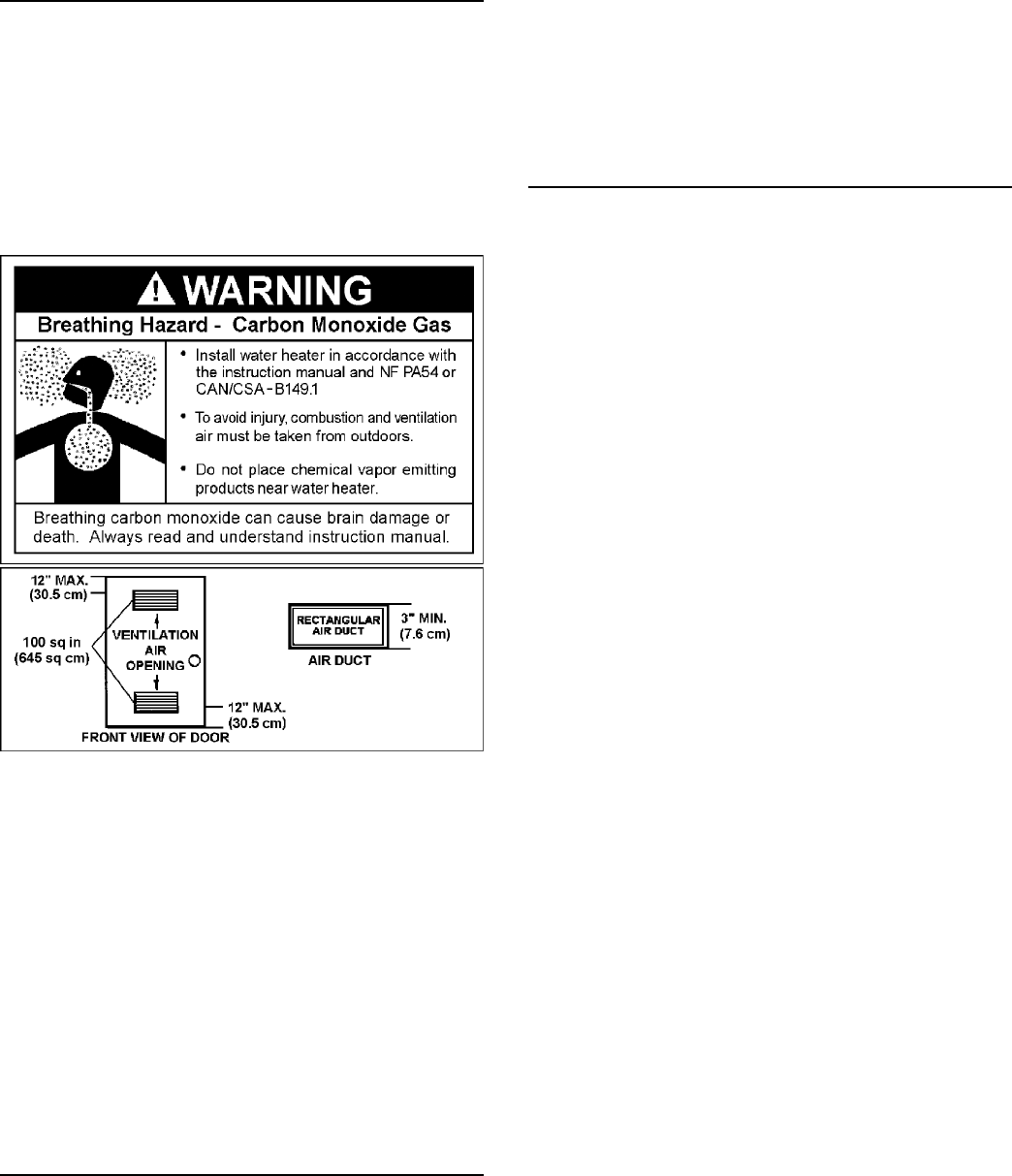
16 www.hotwater.com
COMBUSTION AIR AND VENTILATION
A gas water heater cannot operate properly without the
correct amount of air for combustion. Do not install in a
confi ned area such as a closet, unless you provide air as
shown in the “Facts to Consider About Location” section.
Never obstruct the fl ow of ventilation air. If you have any
doubts or questions at all, call your gas supplier. Failure to
provide the proper amount of combustion air can result in
a fi re or explosion and cause death, serious bodily injury,
or property damage.
FIGURE 10
If this water heater will be used in beauty shops, barber
shops, cleaning establishments, or self-service laundries
with dry cleaning equipment, it is imperative that the water
heater(s) be installed so that all air for combustion and
ventilation is taken from outdoors.
Note: Vent length should be long enough that the outside
air will not freeze the water heater.
Propellants of aerosol sprays and volatile compounds,
(cleaners, chlorine based chemicals, refrigerants, etc.) in
addition to being highly fl ammable in many cases, will also
react to form corrosive hydrochloric acid when exposed to
the combustion products of the water heater. The results
can be hazardous, and also cause product failure.
APPLIANCES IN UNCONFINED SPACES
UNCONFINED SPACE is space whose volume is not less
than 50 cubic feet per 1,000 Btu per hour (4.8 cubic meters
per kW) of the aggregate input rating of all appliances
installed in that space. Rooms communicating directly with
the space in which the appliances are installed, through
openings not furnished with doors, are considered a part
of the unconfi ned space.
In unconfi ned spaces in buildings, infi ltration may be
adequate to provide air for combustion, ventilation and
dilution of flue gases. However, in buildings of tight
construction (for example, weather stripping, heavily
insulated, caulked, vapor barrier, etc.), additional air may
need to be provided using the methods described in
“Appliances in Confi ned Space” that follows.”
APPLIANCES IN CONFINED SPACES
CONFINED SPACE is a space whose volume is less than
50 cubic feet per 1,000 Btu per hour (4.8cm per kW) of
the aggregate input rating of all appliances installed in
that space.
When drawing combustion air from inside a building to a
confi ned space, such a space should be provided with two
permanent openings. ONE WITHIN 12 in. (30cm) OF THE
ENCLOSURE TOP AND ONE WITHIN 12 in. (30cm) OF
THE ENCLOSURE BOTTOM. Each opening should have
a free area of 1 square inch per 1000 Btu/hr (22 cm
2
/kW)
of the total input of all appliances in the enclosure, but not
less than 100 square in. (645 cm
2
).
If the confi ned space is within a building, air for combustion
and ventilation must be obtained from outdoors. When
directly communicating with the outdoors or communicating
through vertical ducts, two permanent openings, located
in the above manner, should be provided. Each opening
should have a free area of not less than 1 square inch per
4000 Btu/hr (5.5 cm
2
/kW) of total input of all appliances in
the enclosure. If horizontal ducts are used, each opening
should have a free area of not less than 1 square inch per
2000 Btu/hr (11 cm
2
/kW) of the total input of all appliances
in the enclosure.
A. ALL AIR FROM INSIDE BUILDINGS: (See Figures 10
& 11)
The confi ned space should be provided with two permanent
openings communicating directly with an additional
room(s) of suffi cient volume so that the combined volume
of all spaces meets the criteria for an unconfi ned space.
The total input of all gas utilization equipment installed in
the combined space should be considered in making this
determination. Each opening should have a minimum free
area of 1 square inch per 1,000 Btu per hour (22 cm
2
/kW)
of the total input rating of all gas utilization equipment in
the confi ned space, but not less than 100 square in. (645
cm
2
). One opening should commence within 12 in. (30cm)
of the top and one commencing within 12 in. (30cm) of the
bottom of the enclosures.



